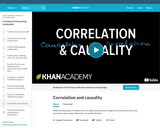
Understanding why correlation does not imply causality (even though many in the press and some researchers often imply otherwise).
- Subject:
- Mathematics
- Material Type:
- Lecture
- Provider:
- Khan Academy
- Author:
- Salman Khan
- Date Added:
- 07/12/2018

Understanding why correlation does not imply causality (even though many in the press and some researchers often imply otherwise).

The concepts that underlie the fourth essential principle of climate literacy ("Climate varies over space and time through both natural and man-made processes.") are too complex for students in early and upper-level elementary school, but the foundational knowledge can be taught within existing curriculums and standards. This foundational knowledge will lead to understanding in later years. The author shows the correlation to the national science education standards, identifies misconceptions among elementary school students, suggests formative assessment probes, and identifies lessons and activities to make curriculum connections. The free, online magazine Beyond Weather and the Water Cycle is based on the seven essential principles of the climate sciences.

Children will count out objects by touching the objects as they count them. Ask them to answer how many they counted.

This video gives brief descriptions of learning intentions (targets) and success criteria.
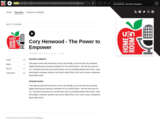
This week we took UEN Homeroom on the road, literally, as we met with Cory Henwood, Digital Teaching and Learning Coordinator for Iron School District, from the front seat of a car. During this discussion we covered topics such as: providing students with choice, using technology to empower students, and Launch High School, Iron's soon-to-open competency based high school.

Indigenous People have been creating cosmetics and natural body remedies for thousands of years. Through trial and error, they have blended science and a deep understanding of human biology to connect with the world around them in very personal ways.
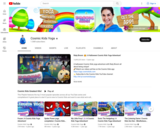
Videos for yoga, mindfulness, and relaxation for kids!

Students will eat up this lesson about oranges as they practice the skills that help them investigate and make detailed observations for descriptive purposes.

This video from NASA features the Cosmic Origin Spectrograph (COS), which allows scientists to use spectrographic analysis to assess the composition of intergalactic material.

In this video excerpt from NOVA, find out how whole genome sequencing saved the life of Alexis, a fraternal twin who was originally diagnosed with cerebral palsy but, in fact, had an even rarer genetic condition.
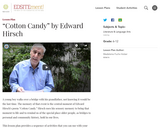
This lesson plan is the fourth in the "Incredible Bridges: Poets Creating Community" series.It provides a video of the poet, Edward Hirsch, offering a little backstory, then reading the poem "Cotton Candy." The companion lesson contains a sequence of activities for use with secondary students before, during, and after reading to help them enter and experience the poem.

As cotton's reputation as a viable source of wealth grew, slave traders began to buy enslaved people in Maryland's eastern shore to take down to the Deep South. Harriet Tubman witnessed her older sisters being dragged away in chains, a memory that she would carry for the rest of her life.

This lesson enhances vocabulary acquisition and learning about how the Earth rotates on its axis and revolves around the Sun by reading the story, "Cottontail Shoots the Sun," a traditional tale shared by the Ute Indian Tribe of the Uintah and Ouray Reservation. It also helps students become familiar with cultural storytelling and its importance in Native cultures. Students will have a brief introduction to the Ute Indian Tribe of the Uintah and Ouray Reservation, its location, and partnership with the University of Utah. Then students will particpate in the group reading of the book and a STEM lesson learning about observable patterns in the sky.
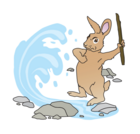
This lesson shares a Ute tale with students to help them to use illustrations to help clarify text details and sequence. The story is then used to help engage students in a discussion on bullying, how actions have consequences and what the characteristics are of a good friend.Background information gives teachers resources to help their students learn more about the Ute Indian Tribe of the Uintah and Ouray Reservation. The lesson is an integrated English Language Arts, Social Studies, Health lesson.

Visualize the electrostatic force that two charges exert on each other. Observe how changing the sign and magnitude of the charges and the distance between them affects the electrostatic force.

As slavery started to unravel in the Confederacy, the North kept pressure on Lincoln to transform the Civil War into a fight for freedom—with Black and white abolitionists, liberal congressmen, and Black congregations asking him to heed the call.

This Flash game develops students' computational fluency and flexibility. It can be played alone or with others. Players choose 6 face-down number cards, and the applet provides a target number. Number cards include one each of 25, 50, 75, and 100, and multiple copies of 1 to 10. The goal is to use the selected numbers and the four basic operations (addition, subtraction, multiplication, division) to arrive at the target. Players can ask the applet to Show a Solution, although others may be possible. Several rule and scoring variations are suggested. A full screen option facilitates use on an interactive board. (This game is not self-checking.)

This Canva presentation can help high school teachers instruct students in using digital tools for good.

Dr. Naomi Watkins and Robert Austin present about how to help students counter misinformation.

As students engage with and search for information online, they encounter a landscape of false claims, conspiracy theories, and manipulated images and videos, much of which they may believe. This online climate requires more than the common practice of presenting multiple viewpoints and asking students to draw conclusions based on evidence. This presentation will provide strategies, tools, and resources for how to help students navigate this digital world, including ways to foster a classroom environment that supports conversations about tough topics.